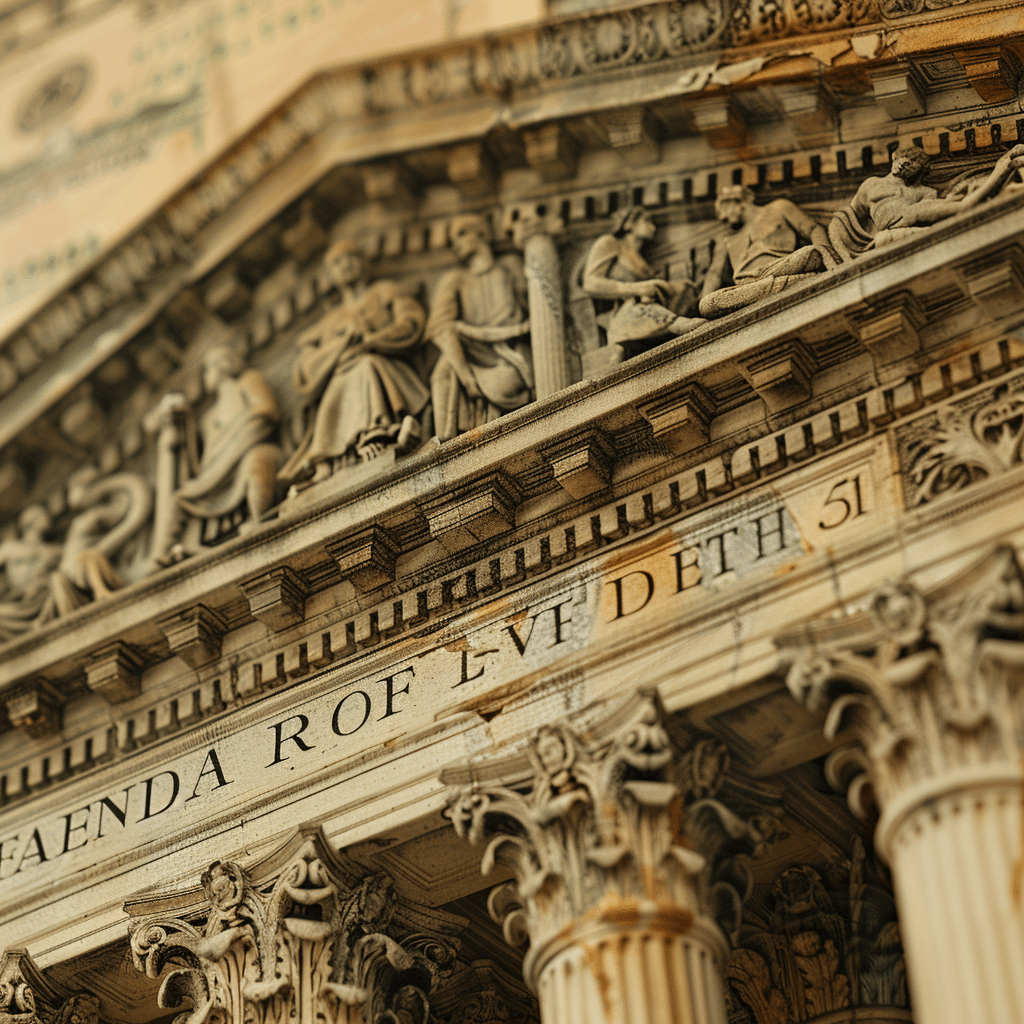Why Are Interest Rates So High: Key Factors Explained
In the financial dance that is the mortgage market, interest rates have taken center stage, pirouetting to heights that have many would-be homeowners and investors raising their eyebrows in concern. “Why are interest rates so high?” is a question on the minds of many, from first-time homebuyers to seasoned real estate moguls. In this article, we’re going to cut through the noise and get to the heart of what’s driving these numbers up. It’s not just some unseen financial force; it’s a confluence of factors, each playing their part in this broad economic ballet.

Dissecting the Surge: Reasons Behind High Interest Rates in 2024
What’s the deal with these skyrocketing rates, really? Think of interest rates kind of like the economic weather forecast: a reflection of what’s happening in a bigger picture—some of which is clear-cut, some of which requires a bit more deciphering. Let’s dive into what’s brewing in the financial atmosphere and why the winds of higher interest are blowing so strong this year.

Central Bank Policies: The Steering Force Behind Rising Rates
Central banks, such as the Federal Reserve and the European Central Bank, are like the captains of the monetary ship. They steer the economy through the turbulent waters of potential financial mishaps. In recent times, these institutions flexed their muscles and tweaked policies to curb some unruly economic currents. Why, you ask?
Well, when times got tough, these policymaking bigwigs saw the economic growth starting to gallop a bit too hard, so they pulled back on the reins—raising interest rates to ensure the economy didn’t overheat. By making borrowing more expensive, people spend a bit less, businesses pump the brakes on expansion, and the entire economic merry-go-round slows to a more sustainable pace.
Let’s not forget that economic conditions such as employment rates and the ebb and flow of consumer goods play a pivotal role here. They’re what prompts central banks to turn the dial on their policies. After all, it’s a delicate balance between keeping the market humming and stopping inflation from eating away at our wallets.
| Factor | Explanation | Data/Impact |
| Inflation | Rising prices reduce purchasing power, prompting central banks to increase rates to cool the economy and bring inflation down. | CPI data indicates inflation levels that are significantly above central bank targets, such as the Federal Reserve’s 2% goal. |
| Central Bank Policies | Central banks like the Federal Reserve set the benchmark interest rate. When they expect inflation, they may preemptively raise rates. | Federal funds rate increases as a response to anticipated inflation. |
| Economic Recovery | Post-recession or economic downturn, there’s often a rebound in economic activity that can lead to higher interest rates as demand for credit increases. | GDP growth rates rebound following economic downturns. |
| Government Debt Levels | Governments with high debt might have to offer higher interest rates to attract investors for their bonds, which can drive up overall rates in the economy. | Ratios of national debt-to-GDP in the U.S. and other economies are at historically high levels. |
| Global Financial Markets | Interest rates can be influenced by global demand for bonds and other financial instruments. | Bond yield trends in major economies (like the U.S. 10-year Treasury yield). |
| Currency Strength | Countries with weaker currencies compared to others may raise interest rates to defend their currency value and curb outflows of capital. | Exchange rates versus major currencies, such as the USD/EUR rate. |
| Fiscal Policy | Government spending and tax policies can influence the economy’s heat and impact interest rates; expansive fiscal policy may lead to higher rates. | Data on government spending and tax revenue as a percentage of GDP. |
| Supply Chain Disruptions | Disruptions can lead to higher production costs, which contribute to inflation, and subsequently higher interest rates. | Incidences of significant supply chain issues, like during the COVID-19 pandemic. |
| Risk and Uncertainty | Economic or geopolitical uncertainties (like conflicts, trade wars, etc.) can cause higher risk premiums on loans and therefore higher interest rates to compensate lenders for increased perceived risk. | Credit spreads between government and corporate bonds. |
| Consumer Spending | High consumer spending can lead to increased inflation pressure, causing central banks to raise rates. | Retail sales growth rates and consumer confidence indices. |
| Asset Price Inflation (e.g., Real Estate) | Increased borrowing for investments in assets like real estate can drive interest rates higher as banks try to manage the rate of lending. | Housing price index data and mortgage lending rates. |
Inflation’s Grip: The Direct Impact on Interest Rates
Speaking of inflation, it’s like the tenacious vine that wraps itself tightly around your finances, squeezing a bit more each year. Taking a page from historical accounts, we can see that when inflation rates start climbing walls like an overeager ivy, interest rates follow suit. The two move in a tango — one that’s meant to quell the rising cost of living.
Take a gander at our article When will inflation go down to catch a glimpse of inflation’s track record and get a sense of how high we’re stacking up against the past. It’s about harnessing inflation and guiding the economy so those dollars in your pocket don’t lose their might.
Global Economic Tensions and Their Role in Interest Rate Fluctuations
Zoom out, and you’ll realize that it’s not just what happens inside our borders that counts. The global scene is peppered with geopolitical tiffs and trade squabbles that rattle the economic cage. And yes, these battles push and pull at interest rates.
For instance, when two giant economies lock horns, the waves of uncertainty ripple through markets worldwide, and before you know it, lenders are hiking rates to hedge against the risk. Not to mention, any disruption in the flow of goods across borders puts the squeeze on supply, leading to—you guessed it—more expensive borrowing costs.
The Aftermath of Fiscal Stimulus and Government Debt
Picture this: the government throws a fiscal party, splashing out cash to keep the economy buoyant during hard times. It’s all sunshine and rainbows until the bill comes due. That’s when they must figure out how to manage the mound of debt sitting pretty on the nation’s credit card.
High government debt does not just stand still; it waves at interest rates, beckoning them to climb up alongside. After all, higher rates can mean more investor appeal for a country’s bonds, helping to pay down that pesky debt. But this balancing act between stimulating the economy and walking the tightrope of national debt is as intricate as trying to nail a matrix-level move—just look at the backdrop for “matrix 4” insert link)—which speaks volumes about striking that perfect balance.
Supply Chain Disruptions: A Hidden Variable in Interest Rates Equation
Now, let’s not overlook supply chain hiccups. Not visible at first glance, right? But oh, do they ripple through. Picture this: a logistic snarl-up in the automotive sector means fewer cars on lots. That sends prices into overdrive, fueling inflation, which in turn nudges interest rates a notch higher as central banks scramble to cool things down.
It’s as intricate as understanding someone’s “ectomorph body type” insert link) — a lot goes on beneath the surface that shapes outcomes. Supply chain woes tighten the grip on market certainty, pushing financial decision-makers to act.
The Demand-Side Story: Consumer Behavior and High Interest Rates
Look a little closer to home, and you’ll realize that how we all spend and save has some serious sway over interest rates. Shifts in the almighty consumer spending patterns are like whispers hinting at the health of the economy. When consumers tighten their belts, saving more than spending, interest rates might soften to coax out those dollars back into circulation.
Dive into recent research on spending trends, and it becomes clear that these behaviors are significant economic indicators that central banks and investors watch like hawks. It’s all about finding that sweet spot of balanced economic demand.
Housing Market Dynamics: A Closer Look at Mortgage Rates
Then there’s the housing market—an arena that feels the full weight of interest rate shifts. Mortgage rates echo the broader interest rate environment, but they also have their own set of dynamics. Home prices and the delicate dance between housing supply and demand play a substantial part in where mortgage rates land.
In recent times, the tug-of-war between buyers hungry for their slice of the American Dream and the number of homes up for grabs has kept the market hotter than a Phoebe Bridgers’ insert link) track. And let’s be real, rates have felt that heat. This dynamic directly informs how lenders set their mortgage rates—so keeping an eye on this market is key for any savvy mortgage shopper.
Navigating the Apex: Strategies for Coping with High Interest Rates
In this climate, it pays to be as shrewd as financial mogul Robert Kiyosaki when it comes to your money moves. Perhaps you’re considering refinancing options or looking at fixed-rate mortgages to lock in rates before they possibly climb higher—that’s a chess move worth considering. And don’t forget innovative financial products that emerge in response to these hikes.
There are fresh solutions out there — like those hybrid adjustable-rate mortgages that might just be your golden ticket. It’s all about strategizing, keeping your eye on the prize, and not being afraid to think outside the box in tough times. Be sure to sail on over to “princess cruises 2024” insert link) for a peek at how industries adapt to changing economic climates.
Anticipating the Horizon: Forecasting Future Interest Rate Movements
Peering into the future, expert predictions and economic indicators offer a compass for where interest rates might head. Now, whether they continue their ascent or plateau depends on an intricate web of variables.
We’ve got economic growth on one side, tipping the scales toward higher rates if it bolts ahead. On the other, if inflation begins to cool its heels, we might see rates take a breather too. Keep a sharp eye on the horizon and those indicators; they’ll signal whether we’re in for smoother sailing or more choppy waters.
An Insightful Summary: Reflecting on the Factors Affecting Your Wallet
We’ve traversed quite a stretch of financial terrain together, haven’t we? From the high-rolling halls of central banks to the day-to-day hustle of consumer behavior, many intricate threads weave into the tapestry of today’s high interest rates.
Remember, knowledge is power—so keep your ears to the ground, eyes on the data, and stay informed through credible sources like “why are interest rates going up” insert link),will interest rates go up” insert link), and reliable forecasts. Stay nimble with your financial strategies, and when things seem perplexing, sometimes the simplest action, like revisiting your budget or talking to a financial advisor about “aoc net worth” insert link), is the smartest move to make.
Sure, the winds of interest rates may gust and billow, but equipped with the right insights and a sturdy financial compass, you can navigate these high seas confidently. Stay savvy, my friends, and may your financial voyage be fruitful.
Exploring Why Interest Rates Are So High
Ever wonder why your wallet feels a bit lighter these days when dealing with loans or mortgages? Well, buckle up, because understanding why interest rates are so high can be quite the rollercoaster ride! Interest rates can be as unpredictable as the weather, changing due to a mixed bag of economic factors. Believe it or not, they’re tied to everything from inflation to the Federal Reserve’s latest whims.
For starters, think of interest rates as the economy’s thermostat. When the economy heats up, interest rates often rise to cool it down. Inflation, which is basically the economy saying, ‘things just got pricier,’ pushes central banks to pump the brakes by hiking up rates. Now, you might be scratching your head, wondering how the decisions made in plush boardrooms affect your mortgage. Well, let’s just say those decisions ripple out and can turn the calm waters of your monthly budget into choppy waves faster than you can say “refinance.”
But hey, it’s not all doom and gloom! Knowledge is power, and knowing why interest rates soar can help you navigate the stormy seas of finance with a bit more confidence. For instance, your country’s central bank probably has a target inflation rate( it tries to stick to, and when prices escalate too quickly, up go the rates. This move is kind of like tapping the brakes on a car to avoid a speed ticket – it’s all about keeping things under control.
Now, hang on to your hats, because here’s a fun tidbit: some of the steepest interest rates in recent history were seen in the early 1980s when rates skyrocketed into the double digits to combat, you guessed it, rampant inflation. Your parents or grandparents might recall mortgage rates( that could make your eyes water. Imagine shelling out for a home loan with rates pushing 18%—ouch!
So, as we zigzag through the twisty path of high interest rates, keep in mind it’s a tale as old as time, or at least as old as modern economics. Your best bet is to stay informed and maybe even seek out those smart investment opportunities that thrive when rates are on the rise. Remember, with a bit of savvy and an eagle eye on the market, you can turn a seemingly dire situation into a victory lap for your finances.




